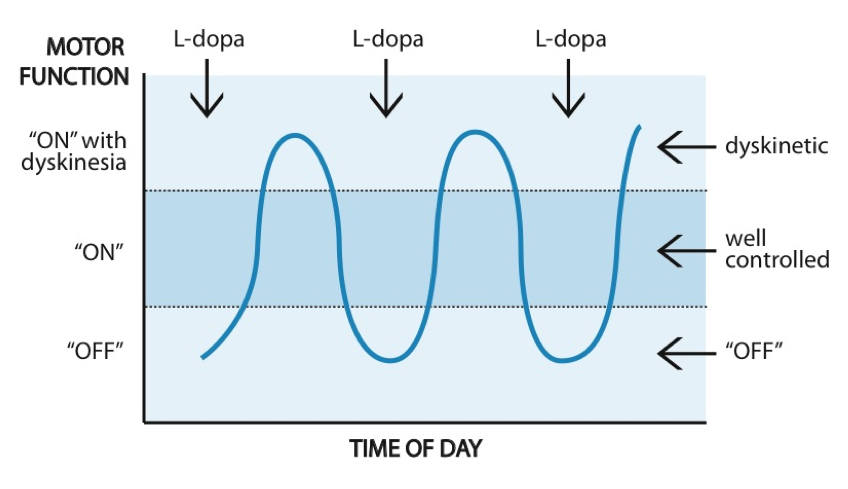-
Phone
1300 17 44 97
-
Fax
02 8580 4867
-
-
Correspondence
Suite 1404, Level 14
St Vincent’s Private Hospital
406 Victoria Street
Darlinghurst NSW 2010
Parkinson’s Disease is a relatively common degenerative neurological disorder that produces problems with movement such as:
It usually affects one side of the body first and more severely than the other side. Whilst people often think about the tremor when they think of Parkinson’s Disease it tends to be the stiffness and slowness that are more disabling (though all three respond to treatment). These are called motor symptoms.
In addition to the above problems it can cause difficulties with balance and walking, as well as problems not related to movement such as sleep disturbance, low blood pressure, constipation, and cognitive problems. These are called non motor symptoms.
Parkinson’s Disease is caused by a degeneration of dopamine producing cells in a region of the brain called the substantia nigra involved in brain circuits that regulate movement.
Medications that increase levels of dopamine are the main class of medications that improve symptoms in patients with Parkinson’s Disease.
There are several disorders that can mimic Parkinson’s Disease but are not actually Parkinson’s Disease – from the neurosurgeon’s perspective this is very important because whereas Parkinson’s Disease responds very well to Deep Brain Stimulation (DBS) surgery, the mimicking conditions do not respond to this treatment.
Early Parkinson’s Disease – good motor control

Parkinson’s Disease after progression – motor fluctuations

Deep Brain Stimulation (DBS) involves placing electrodes into deep parts of the brain, connected to a ‘pacemaker’. These electrodes painlessly stimulate targeted areas to intervene on abnormal circuitry within the brain. The disabling motor symptoms of Parkinson’s Disease are significantly reduced in most cases.

When patients are first diagnosed and treated for Parkinson’s disease the medications can give very good control of the symptoms.
Unfortunately over time the underlying disease progresses and patients can start to experience what are referred to as motor fluctuations. This means that whilst some of the time they still have good control of their symptoms (“on” time) they swing towards dopamine excess at times (which causes abnormal movements called dyskinesia) and at other times have too little dopamine in their system causing an “off” state where they are rigid. This can be a source of disability. There are medical management options for this problem of fluctuating from too much to too little dopamine. These are often effective for a time, though ultimately it can become a problem that cannot be adequately controlled with medication.
Disabling motor fluctuations are the commonest reason for recommending Deep Brain Stimulation.
Other reasons that patients with Parkinson’s Disease may be offered DBS include some patients with disabling tremor (even without the motor fluctuations) or patients whose main problem is difficulty walking.
It is important to remember that DBS treats the motor symptoms of Parkinson’s Disease. It is very effective and gives the average patient an additional 4-5 hours per day of “on” time without dyskinesia. It also allows reduction of medication (at least for the commonly used subthalamic nucleus target).
Randomised trials show that DBS is much more effective than medical therapy and causes a significant improvement in quality of life.
DBS is not a cure for Parkinson’s Disease and doesn’t stop the underlying disease from progressing. Having said this there is evidence in patients assessed 5-6 years after undergoing DBS that they are not only better with their stimulation on than off, but also better with their stimulation on than they were prior to undergoing DBS.